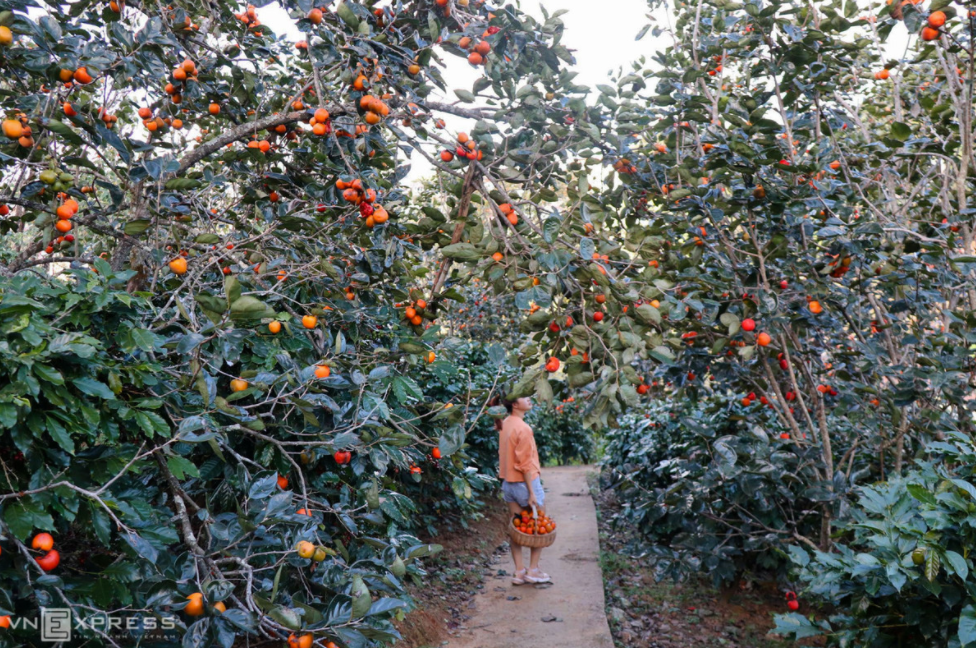 |
| Imported to Vietnam many decades ago, Japanese persimmon were grown in Da Lat because they were suitable with the climatic conditions in this highland. Japanese persimmon is now considered as a specialty fruit of the land of fog. (Photo: VN Express) |
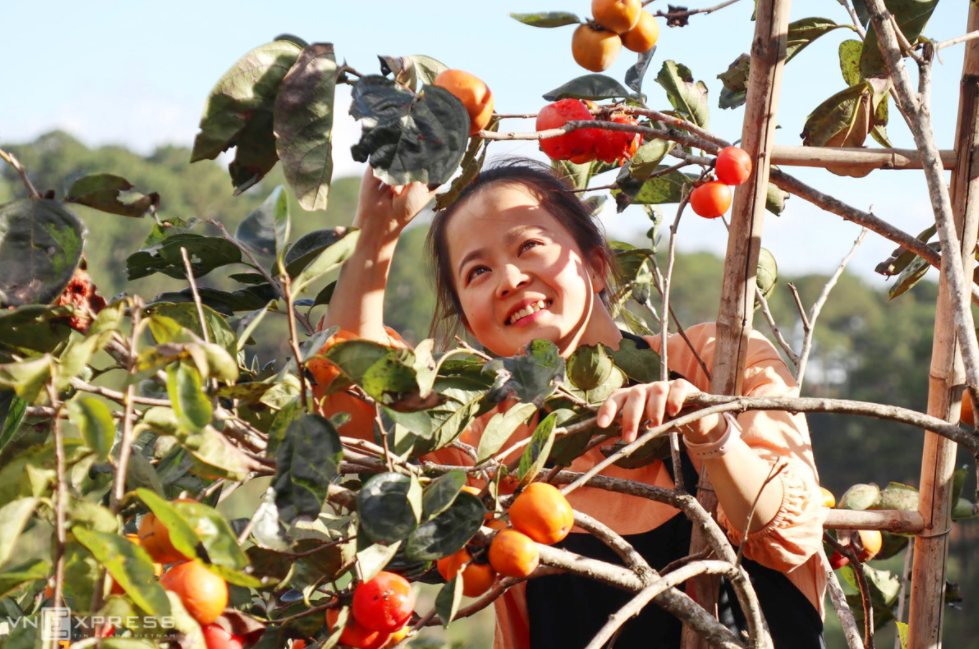 |
| The persimmon season in Dalat starts around the end of August to the end of November. People here harvest the fruits to make wind hanging persimmons instead of selling them as fresh fruits. (Photo: VN Express) |
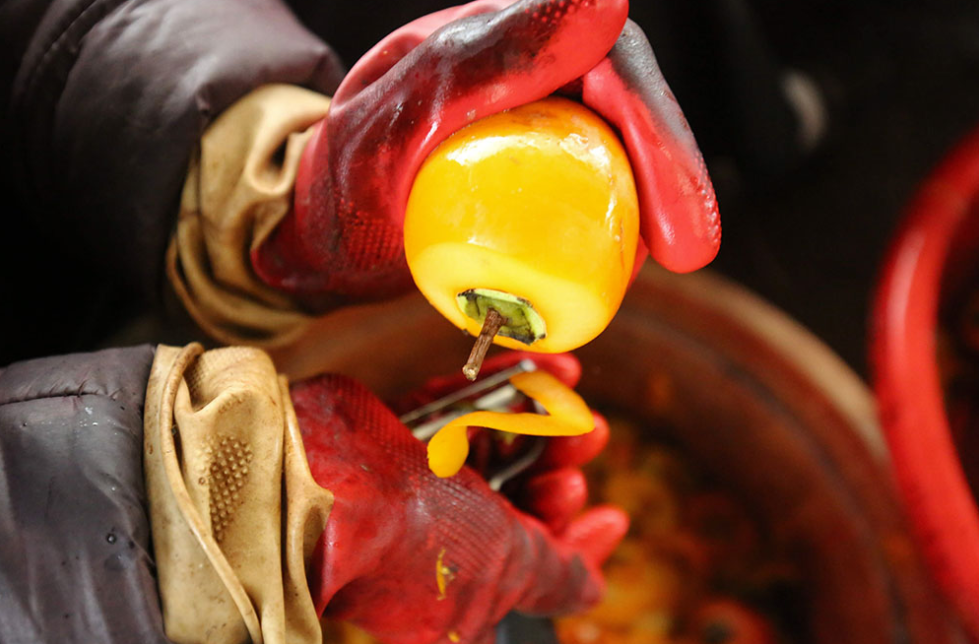 |
| After being harvested, the persimmon fruits are washed and dried before processing. The persimmons are completely peeled, leaving only the stem. (Photo: Nhan Dan) |
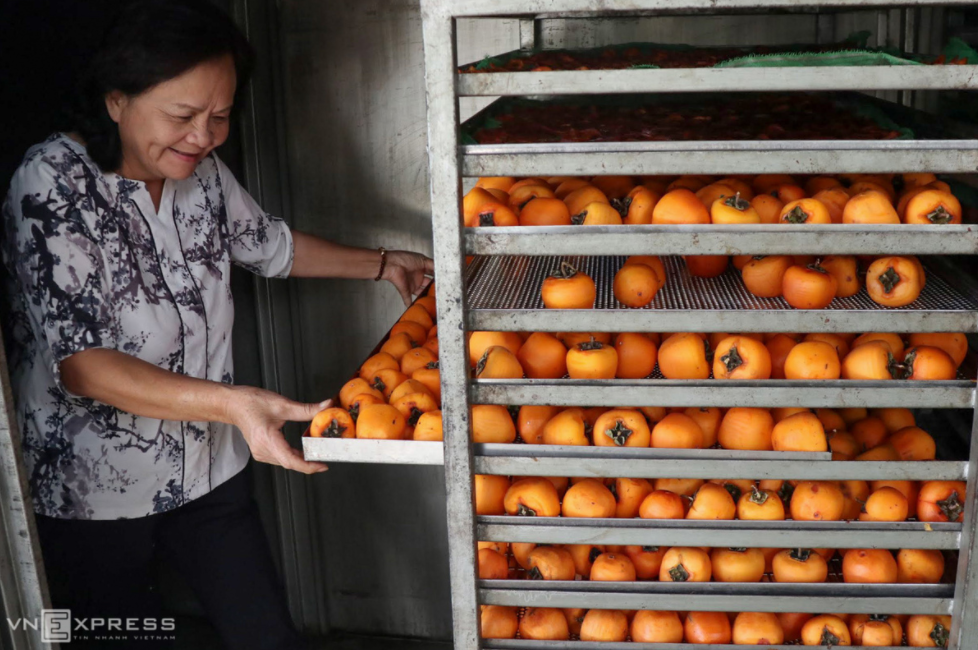 |
| The fruit is dried before hanging. According to Ms. Dang Thi Thu Van, peeled fruits will be dried in an oven for about 3 hours at a temperature of 50-60 degrees Celsius. (Photo; VN Express) |
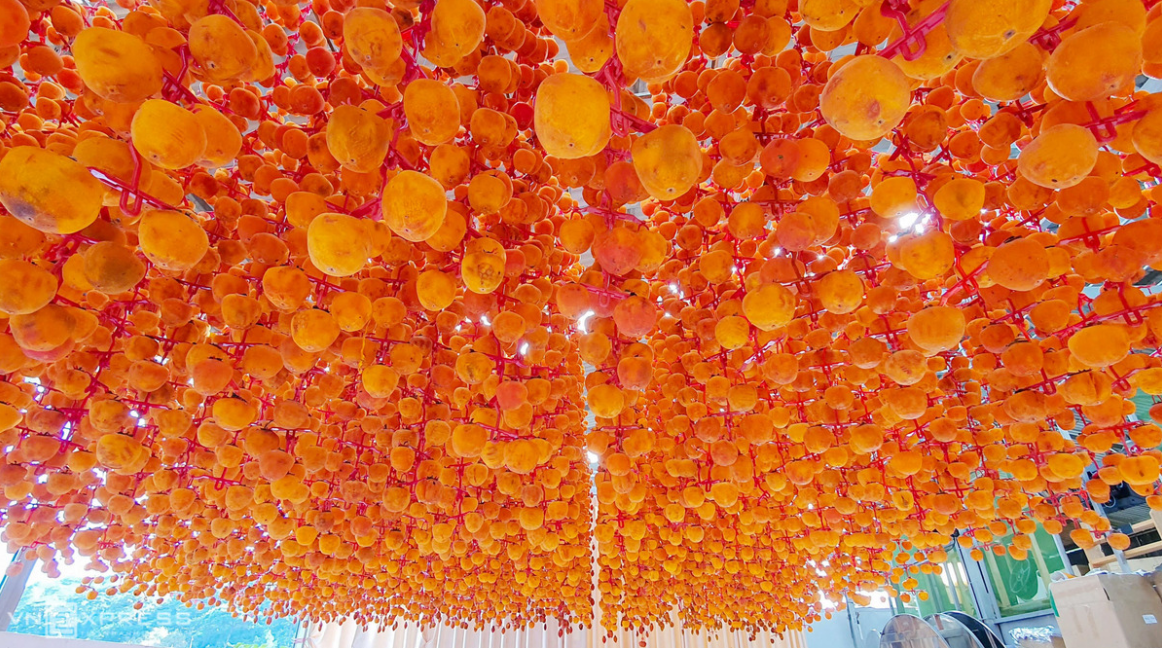 |
| The hanging period lasts about 3 weeks in sunny conditions, with the outdoor temperature of about 25-30 degrees Celsius. (Photo: VN Express) |
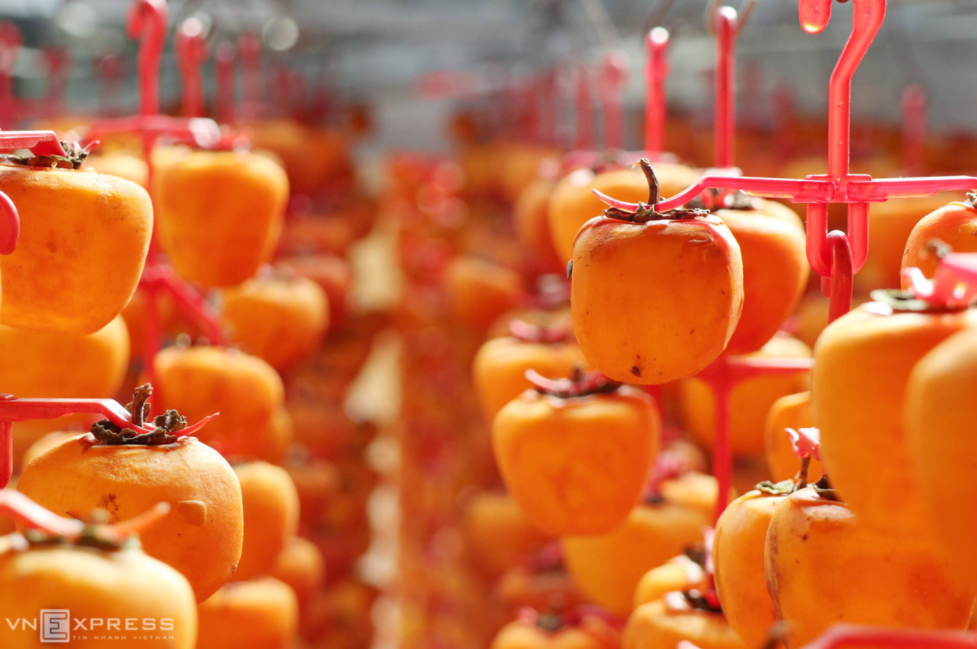 |
| The profession of making hanging persimmons in Dalat was formed nearly 10 years ago when the farmers here received the drying technology from experts of JICA Organization (Japan). (Photo: VN Express) |
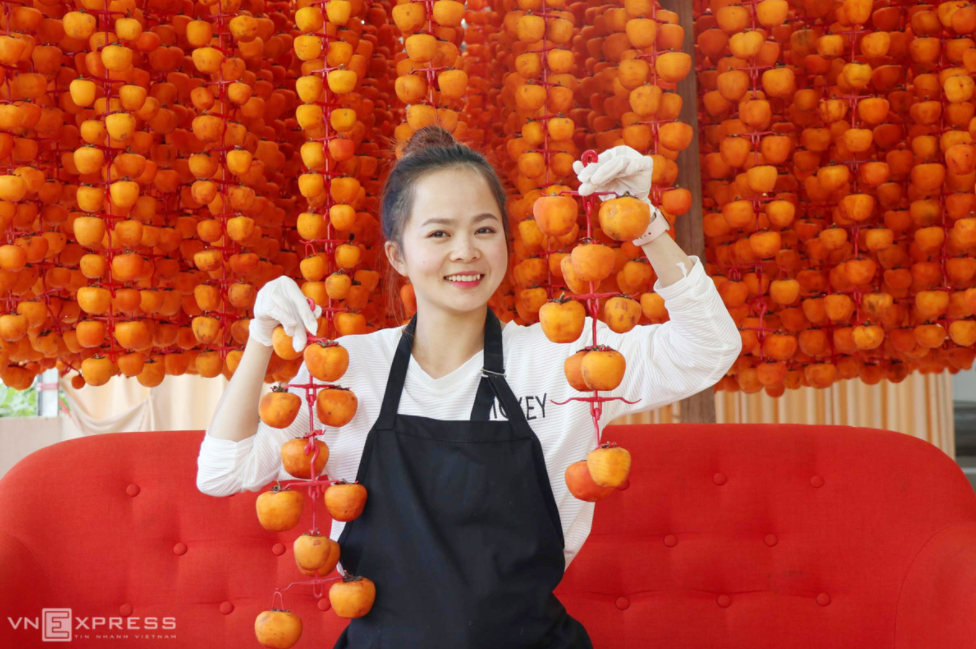 |
| Each persimmon fruit, after being dried in the oven, is hung in a string, without using any preservatives. (Photo: VN Express) |
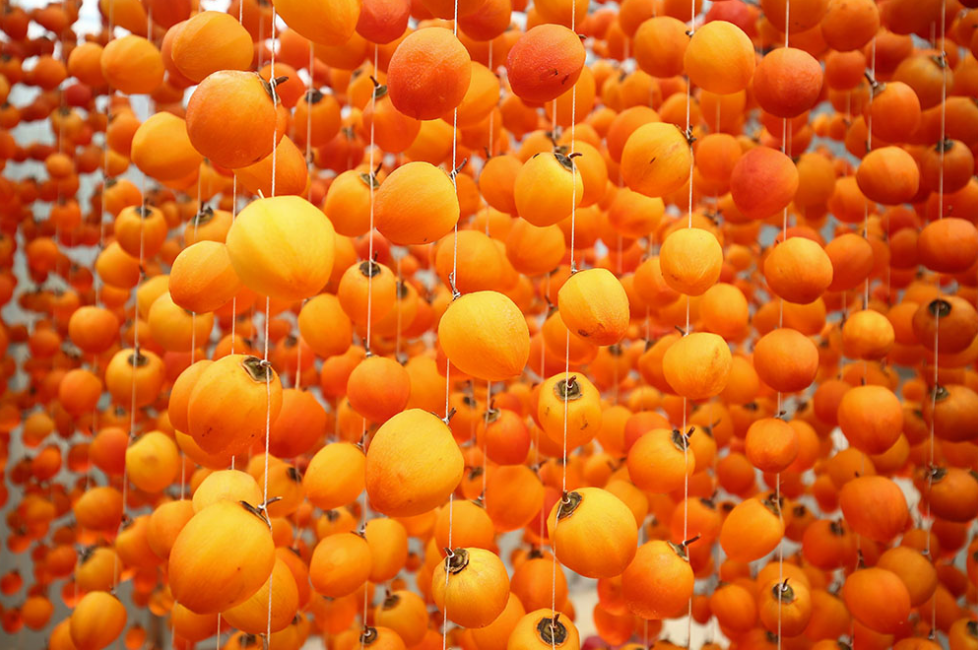 |
| During the hanging process, the fruits will be checked every day to ensure that they are not moldy or damaged. Natural wind-dried persimmon has a bright color. Rainy season in Da Lat is the starting point of wind hanging persimmon fruits season. (Photo: Nhan Dan) |
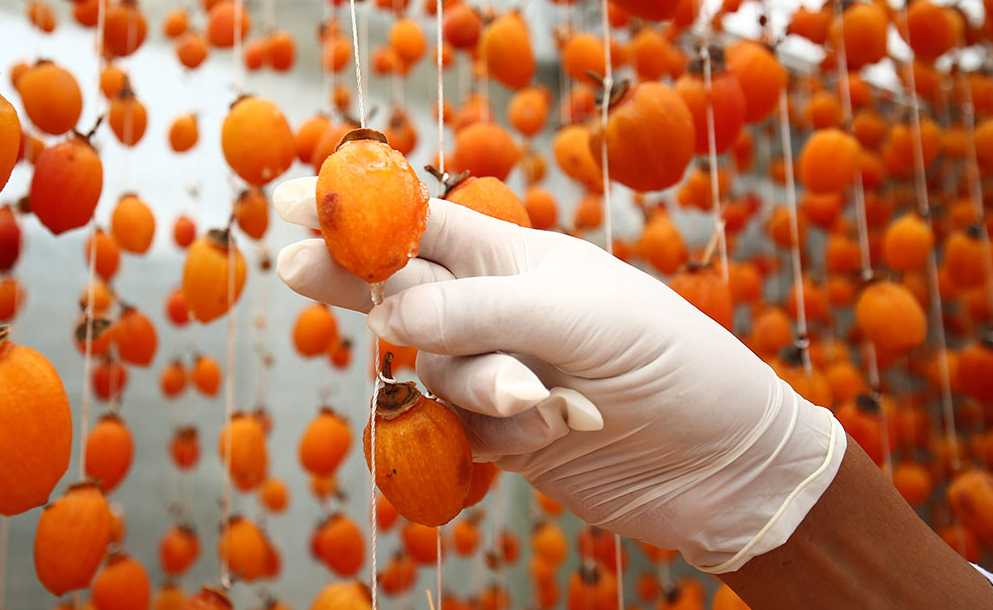 |
| Packaged dried persimmons are sold at the price from 400,000 to 450,000 VND/kg (17 – 20 USD). (Photo: Nhan Dan) |
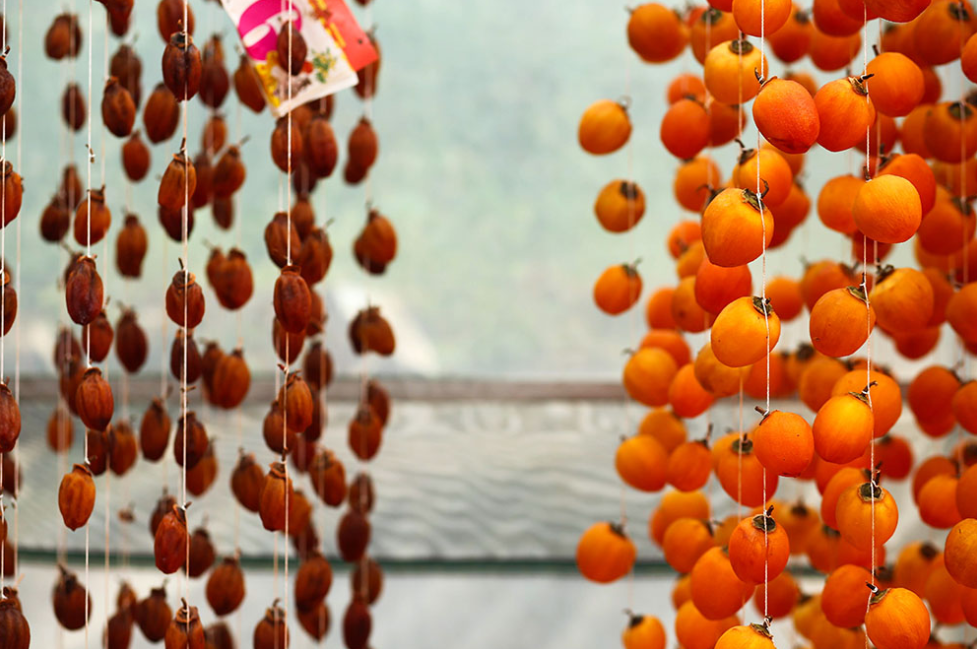 |
| The fruit hanging sites are also famous tourist destinations recently. (Photo: Nhan Dan) |



